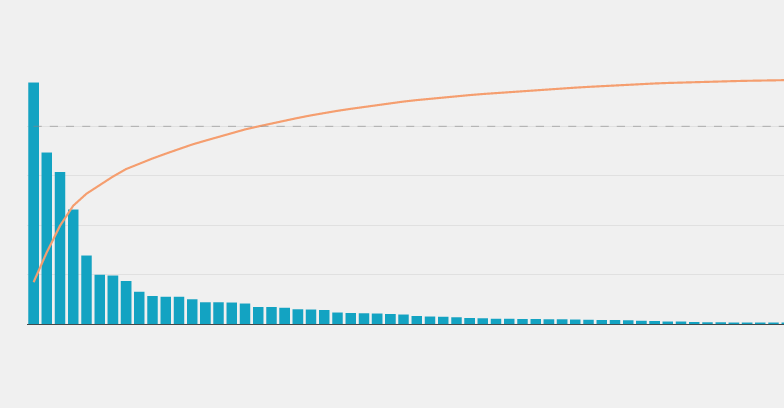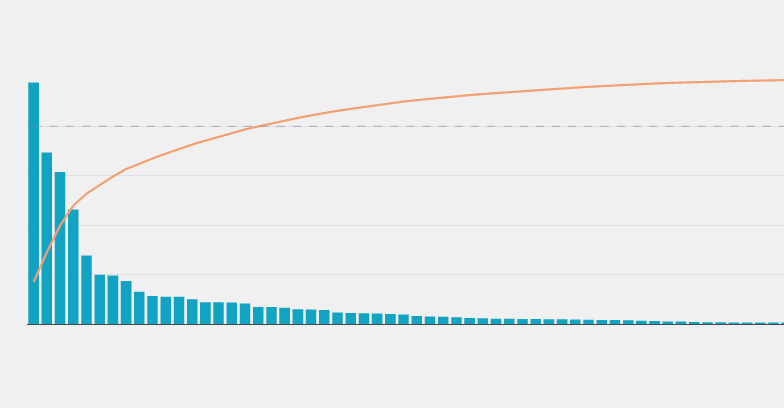The 80/20 Rule

I don't know who first came up with the 80/20 rule, but I feel it should be a guiding principle of business.
Whether we know it or not, the 80/20 rule applies: You get 80% of the value of anything from 20% of the work. Then you do the other 80% of the work to get the last 20% of value.
In fact, here's a picture of how the rule works. I call it the "80/20 Value Curve".

You get tremendous value from the first 20% of effort, and greatly diminishing returns from the rest of it.
(Coincidentally, you'll note that I didn't make my own graph, but just went to the Google Image search and looked for an appropriate graph, which I copied & pasted. Why? Because it's good enough, of course!)
Of course, the rule is something perfectionists have a VERY hard time understanding. They want something to be perfect and will compulsively spend time getting to that upper right part of the value chart. But what a perfectionist doesn't realize is that when they do that, their TIME is not perfect. They have expended (I would say, have thrown away) vast sums of time, and that time can never be returned to them.
In fact, I always say "Perfect is the enemy of good-enough", to which a perfectionist replied to me, "You just used incorrect grammar, the correct way to say this would be, "Perfection is the antithesis to good enough." And I said "That's exactly my point! The way I said it was good enough!" Don't spend time trying to make something perfect unless the market demands it. Just make it good enough until a customer demands better, and then make it good enough again. I've seen so many people trying to make a product, item or service perfect before they even know if there's demand for it. That's just downright stupid in my eyes. Guard your time jealously and dole it out based on what your customer asks for, not based on what you think they're going to ask for. A great quote from the magazine FastCompany: "The most-forgotten rules in business: [1.] Listen to the customer. [2.] You are not the customer.
Lastly, a case study on why the 80/20 rule is present even when you don't know it. Take the airlines, for instance. They have progressed up this value curve to the point where any further prevention of fatalities would be prohibitively expensive. Sure, everyone could be equipped with a parachute, or planes could be made out of titanium instead of aluminum, but the benefit vs. cost of these steps (and countless others) does not compute. Society has, invisibly, pushed the airlines & airplace manufacturers to a point on the value chart where there are few enough accidents that we don't demand further improvements.